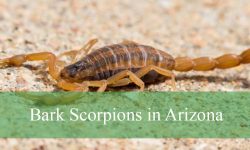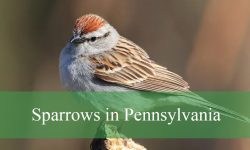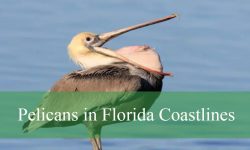Florida is home to a fascinating variety of green lizards, each with unique characteristics and behaviors. These green lizards include species like the North American green anole, Cuban green anole, and knight anole, among others.
From their striking coloration to their distinctive physical traits, these lizards are a part of Florida’s diverse ecosystem. Understanding the differences between these species, such as the size and throat flap color, can help in identifying and appreciating the rich herpetofauna of the region.
Different Types of Green Lizards in Florida
North American Green Anole
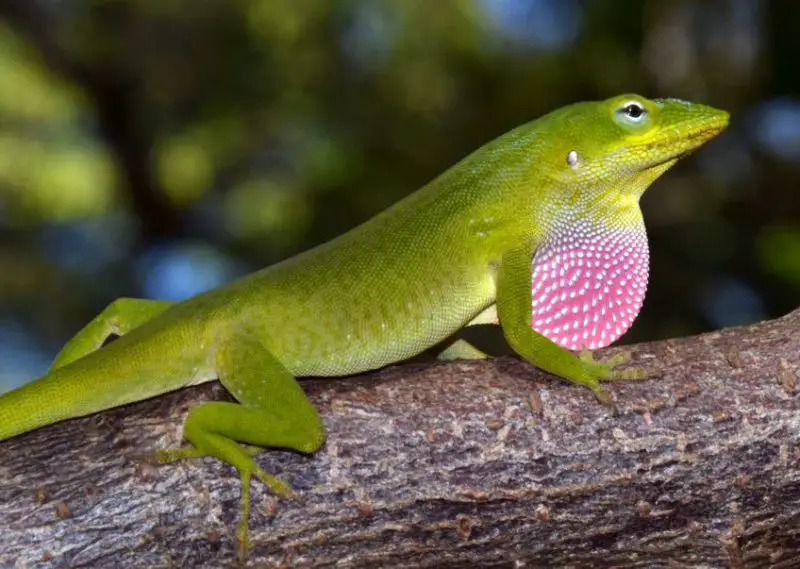
The length of a North American green anole (Anolis carolinensis) is normally 5 to 8 inches. Their ability to change from green to brown, which aids in their ability to blend in with their surroundings, helps to identify them. Their distinct light markings on their backs set them out from other anoles even more. When threatened, males reveal their characteristic pink throat fan.
Males are notorious for being territorial, and they may even attack their own reflection. These lizards are intriguing to watch because of their behavior and ability to change color like chameleons.
Madagascar Giant Day Gecko
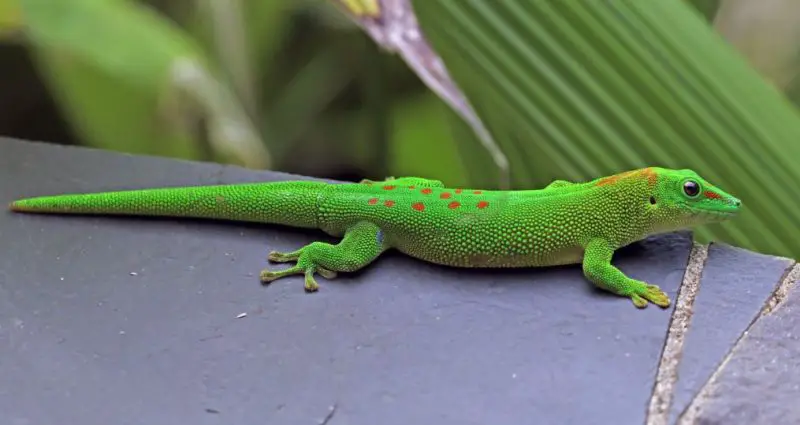
The Madagascar giant day gecko (Phelsuma grandis) is a vibrant, fluorescent green lizard adorned with red spots on its back and a striking red line from its eyes to its snout. Its eyes are encircled by a bright blue ring, highlighting their large dark pupils. Notably, this species served as the inspiration for the Geico gecko mascot.
Besides their striking appearance, these geckos communicate through a variety of sounds, including squeaks, clicks, barks, and croaks, making them unique and engaging creatures to observe.
Eastern Glass Lizard
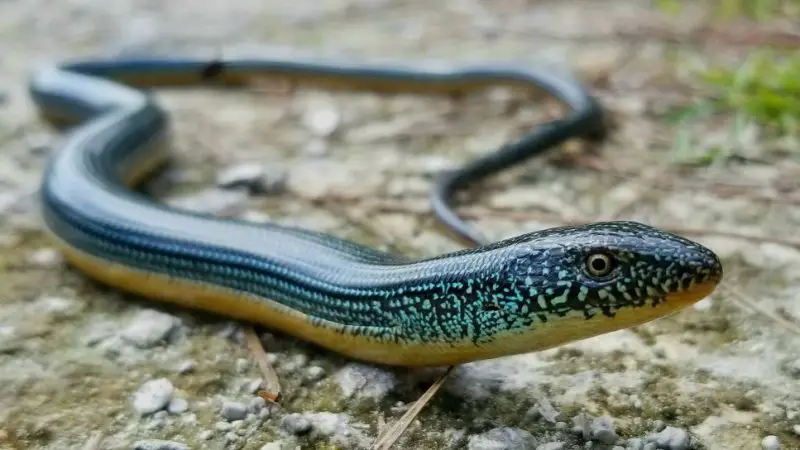
The Eastern glass lizard (Ophisaurus ventralis) is often mistaken for a snake due to its legless body. However, it can be identified as a lizard by its movable eyelids, external ear openings, and inflexible jaws.
Typically, these lizards have a yellowish-green coloration with stripes on their backs, while their undersides remain a solid color beneath a lateral groove.
When threatened, they may thrash and detach their tails, a behavior that gives them their name due to the tail’s tendency to “shatter” like glass.
Green Iguana
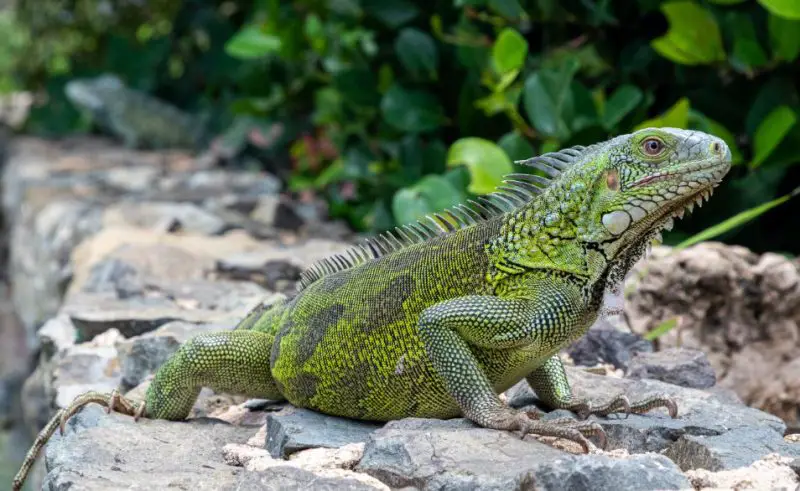
The green iguana (Iguana iguana) is predominantly green with occasional brown markings. While they start at just 10 inches long at birth, they can grow up to 7 feet in length. Native to South America, these iguanas can live up to 20 years.
They feature a prominent row of spikes running along their back to their tail. Excellent swimmers, green iguanas enjoy both fresh and saltwater and can remain submerged for up to four hours.
Despite their swimming abilities, they prefer sunbathing on land. In Florida, green iguanas are considered invasive and have been problematic for local ecosystems.
Green Ameiva
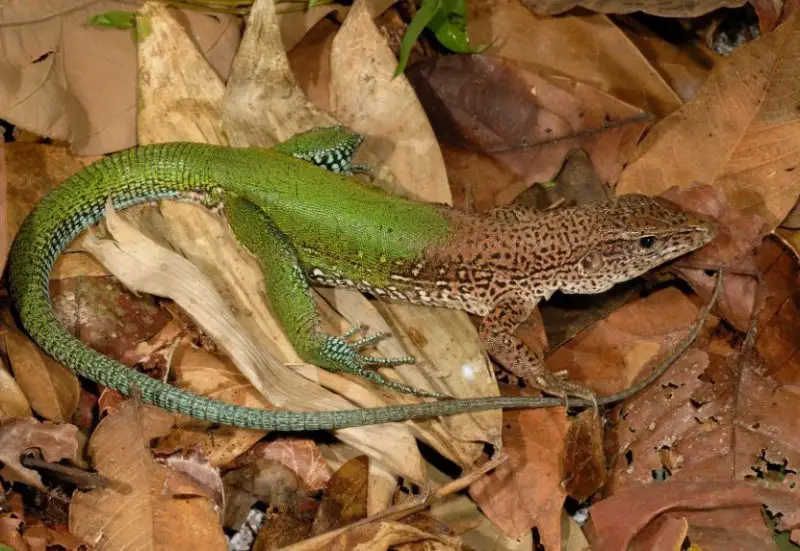
The green ameiva (Ameiva ameiva), or giant ameiva, is distinctive with its vivid green patches on the head or pelvic area, while the rest of its body is primarily brown. Its belly is a striking turquoise color, and both males and females exhibit random black specks across their bodies. These lizards can reach lengths of 14 to 24 inches, with males typically being larger.
Native to Central and South America, green ameivas have been introduced to Florida through the pet trade. Their unique coloration and size make them an intriguing species to identify and observe.
Jamaican Giant Anole
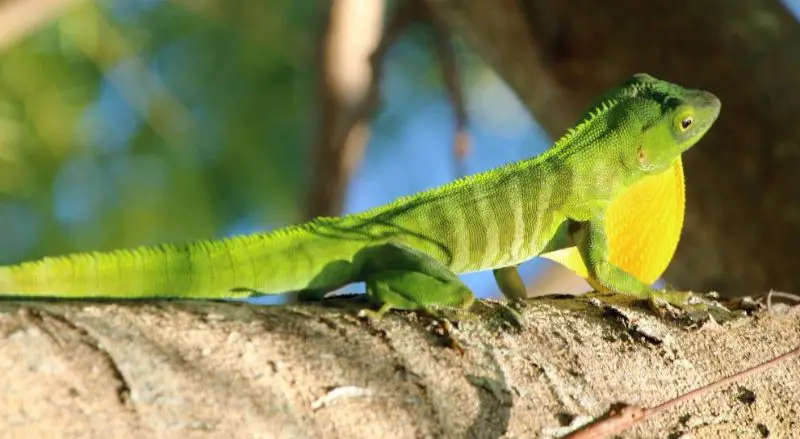
The Jamaican giant anole (Anolis garmani), despite its name, is smaller than the knight anole, with adults measuring 6 to 10 inches and males being larger than females. They feature a green outer skin that can turn brown in the evening. A distinctive yellow dewlap sets them apart from other anoles.
These lizards primarily feed on fruits and invertebrates, though they occasionally eat smaller anoles. Their size, color-changing ability, and yellow dewlap make them easily identifiable among other anole species.
Knight Anole
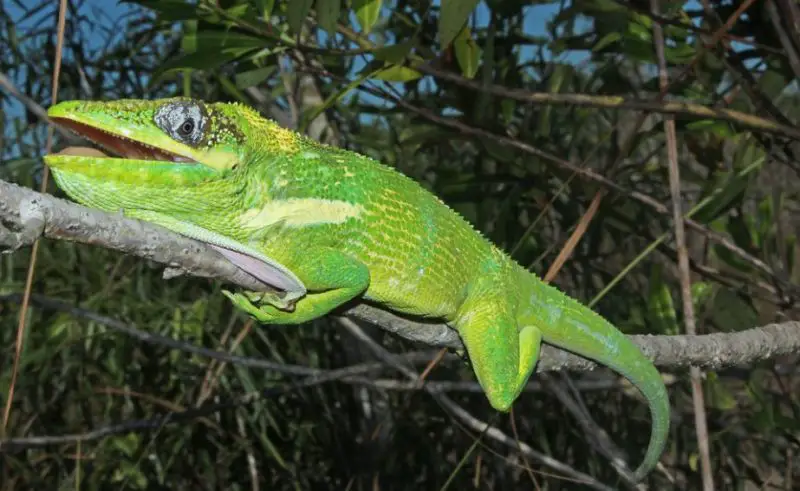
Knight anoles (Anolis equestris) are the largest anoles in Florida, often mistaken for iguanas, growing 13 to 19 inches long. They are easily recognized by their bright green skin and a distinctive yellow stripe running from under their eyes to their shoulders. They have large, bony heads and a pink throat flap, known as a dewlap.
Both males and females possess this dewlap, making gender differentiation difficult. Native to Cuba, knight anoles are now common in South Florida. Their significant size and striking coloration make them stand out among other anole species.
Hispaniolan Green Anole

The Hispaniolan green anole (Anolis chlorocyanus) resembles the green anole but with notable differences. Originating from Hispaniola, they can be identified by their blue throat flap, contrasting with the North American green anole’s red flap.
Males are typically bright green, while females may display darker green stripes along their sides. These distinctions, particularly the blue dewlap, help in recognizing the Hispaniolan green anole from its North American counterpart.
Cuban Green Anole
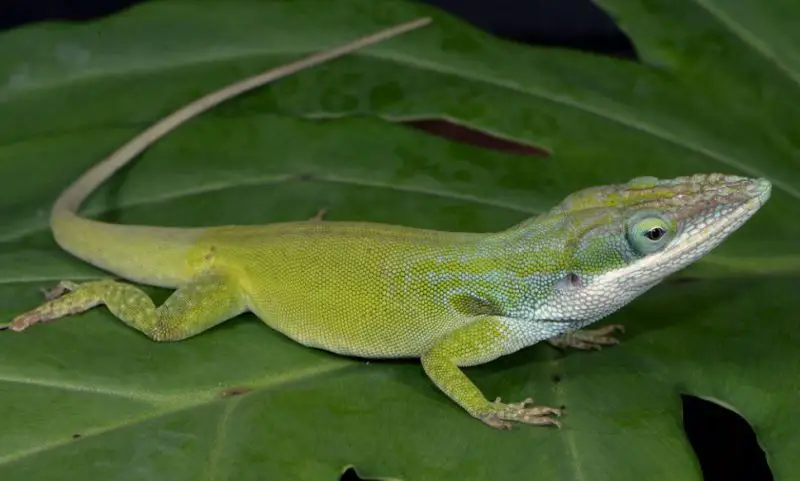
The Cuban green anole (Anolis porcatus) is strikingly similar to the North American green anole, leading some to argue they are the same species. A key distinguishing feature is their size, with Cuban green anoles being larger. Both species can interbreed.
Since being introduced from Cuba to Florida, they now share overlapping habitats, making geographical location an unreliable identifier. Despite their similarities, the larger size of the Cuban green anole helps in distinguishing them from their North American counterparts.
Blue-crested Lizard
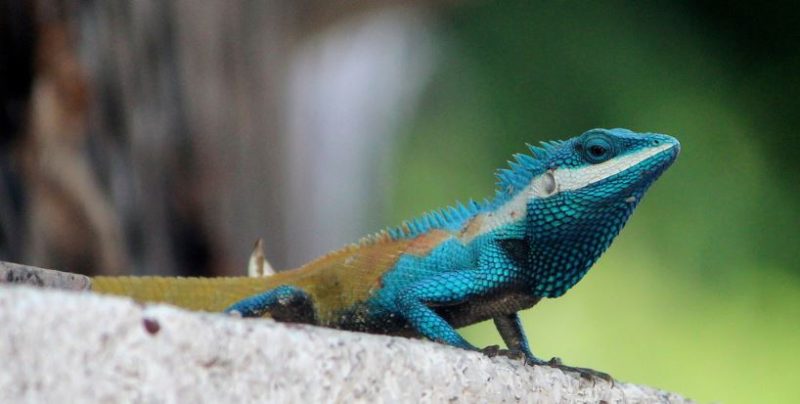
The blue-crested lizard (Calotes mystaceus) is a species native to Southeast Asia, China, and South Asia, yet now introduced to Florida. Recognizable for its initial gray to olive hue, during breeding season, it undergoes a stunning transformation, showcasing vibrant shades of turquoise, bright blue, yellow, and gold.
These lizards adapt to various habitats, thriving in lowland and lower montane forests, as well as gardens, parks, and forest edges. To identify them, observe their striking color changes, which serve as a hallmark feature, especially during mating seasons, making them a sight to behold in their new Floridian habitat.
Are green lizards in Florida dangerous?
Green lizards in Florida, such as the North American green anole, Cuban green anole, and knight anole, are generally not dangerous to humans. These lizards are mostly harmless and pose no significant threat. They are more likely to flee than to engage when encountered. While some larger species, like the knight anole, may bite if provoked, their bites are not venomous and rarely cause more than minor discomfort. These lizards primarily contribute to the ecosystem by controlling insect populations and adding to the region’s biodiversity.


